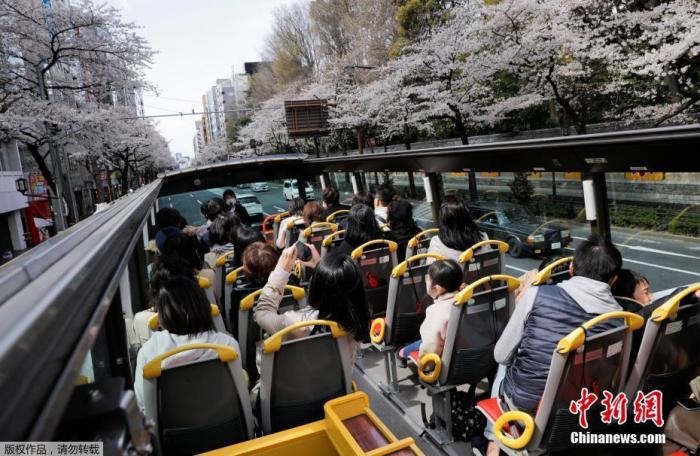China News Service, March 26. According to Kyodo News, on the 25th, Shigeru Omino, chairman of the Japanese New Coronavirus Infection Response Team, at the Senate Budget Committee meeting, asked the central government to focus on the spread of the new crown epidemic in Japan’s Miyagi Prefecture. Discuss the implementation of “key measures such as the prevention of spread” as a stage before the emergency declaration.
On the 25th, the number of newly infected people in Japan was 1,917, which was close to the level of 2,000 in early February.
Japanese media pointed out that the number of infected people in Osaka, Yamagata, Okinawa and other places has increased, and this time it has been less than a week since the emergency declaration on March 22 was completely lifted.
Data map: On March 22, local time, the state of emergency was lifted in Tokyo, Japan, and the tourism industry gradually recovered. People wore masks and took a sightseeing bus to enjoy cherry blossoms.
According to reports, during a meeting with the National Governor’s Council on the 25th, Minister of Economic Regeneration, Kominori Nishimura stated that “if the situation does not improve, I hope to work together to respond flexibly to key measures such as spreading prevention”.
Entering March, Miyagi Prefecture and Sendai City, which have seen significant increases in the number of new crown infections, issued separate emergency declarations on the 18th.
On the 24th, 171 infected persons were confirmed in the county, a single-day high.
Starting on the 25th, Sendai City’s restaurants offering alcoholic beverages, etc., requested that their business hours be shortened to before 9pm.
In Yamagata and Ehime, the number of new infections on the 25th also reached a new high.
In Osaka Prefecture, where the number of newly infected people exceeded 260 for two consecutive days, Governor Yoshinori Yoshimura said on the 25th that he would consider extending measures to shorten the business hours of restaurants in Osaka City by three weeks until April 21.
In addition, the 1 capital and 3 counties in the metropolitan area have also reached an agreement to extend the requirements for shortening the business hours of restaurants until April 21.
The report pointed out that the average daily number of new infections in Tokyo in the past week exceeded 300, and continued to increase slightly.
In the week ending March 23, the number of people infected with the mutant strain was 150, an increase from last week.
The central and local governments have tightened their nerves on the expansion of the epidemic and strengthened monitoring.

